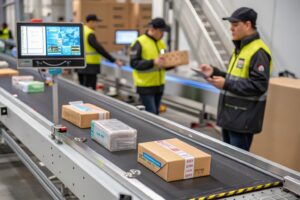What is a Smart Factory?
Factories waste millions on inefficiencies yearly. Smart factories fix this. I saw a plant cut costs by 30% after upgrading. Here’s how it works.
A smart factory uses cloud computing and IoT to automate processes. Sensors collect real-time data. Machines adjust automatically. This reduces errors and speeds up production. The result? Higher output with lower costs.

But just adding tech isn’t enough. You need the right systems. Let’s break down what makes smart factories truly transformative.
How Do Smart Factories Elevate Operational Efficiency?
I watched a team struggle with delayed shipments. After integrating cloud solutions, they tracked every component in real time. Delays dropped by 45%.
Cloud computing centralizes data from machines, suppliers, and logistics. Algorithms predict bottlenecks before they happen. Teams get alerts to act fast. This keeps production flowing smoothly.

Core Components of Efficiency
-
Real-Time Monitoring
- Sensors on equipment report status every second.
- Dashboard shows live updates (e.g., temperature, speed).
-
Predictive Maintenance
Traditional Smart Factory Fix breaks Prevent breaks $10k downtime cost $500 sensor cost -
Automated Workflows
- Orders trigger material requests automatically.
- No human delays between steps.
A client reduced unplanned downtime from 20 hours/month to 2. Their secret? Analytics spotting wear-and-tear early.
What Future Do Smart Factory Planning Systems Unlock?
A car manufacturer once took 3 days to reschedule production. With AI planning, they now adapt to supply changes in 20 minutes.
AI analyzes trends, weather, and supplier delays. It redesigns workflows instantly. Factories gain flexibility to handle surprises without slowing down.

Breaking Down Planning Advantages
-
Demand Shifts
- Example: During a chip shortage, one factory rerouted resources to high-margin models first.
- Result: 12% revenue increase despite shortages.
-
Energy Savings
- Smart systems power down idle machines.
- One plant saved $200k/year on electricity.
-
Scalability Scenario Manual Planning AI Planning New product line 6-week setup 2-week setup
These systems learn over time. The more data they process, the sharper their recommendations become.
Can Cloud Technology Truly Streamline Manufacturing?
A textile company lost 8% of fabric to errors. After moving quality checks to the cloud, defects fell below 1%.
Cloud platforms standardize processes across locations. Workers access the same protocols globally. Consistency eliminates variability that causes waste.

Where Cloud Adds Value
-
Collaboration
- Engineers in Germany adjust settings for a Mexican plant instantly.
- No more version control issues with spreadsheets.
-
Security
- Encrypted backups replace vulnerable paper records.
- Audit trails track every change.
-
Cost Structure
- Pay for server space used, not owned.
- Small factories avoid upfront IT investments.
A bakery chain cut ingredient waste by 17% after cloud software optimized their ordering. Real-time usage data prevented over-purchasing.
Conclusion
Smart factories merge cloud computing, AI, and IoT to cut costs and boost output. They’re not optional—they’re the new baseline for competitive manufacturing.